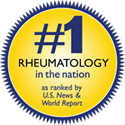Vaginal dryness in woman with Sjögren’s disease occurs in both the pre- and post-menopausal age years. Menopause is often a contributing factor, since many women with Sjögren’s disease are in menopause A lubricant is a quick and easy solution for you if you suffer only from dryness. Over-the-counter lubricants include Mia-Vite, Sylk, Luvena, Astroglide, KY jelly, and Silken Secret. Beware that many lubricants market themselves as moisturizers; the difference is that a moisturizer will have instructions to apply it inside the vagina on a regular basis whereas a lubricant should be used during sex. Olive and vitamin E oils are a simple solution for lubricating the vagina. The vitamin E capsules can be opened and the oil used in and around the vagina. Just a few drops of either eliminate vaginal dryness and lubricate the vagina sufficiently for intercourse. The regular use of olive oil as a lubricant will keep the delicate tissues of the vagina soft and supple. Olive oil can even be applied several hours before sex, allowing for impromptu sex without having to stop and apply a lubricant.
Over-the-counter vaginal moisturizers include Mia-Vite Intimate Skin Moisturizer and/or Personal Lubricant and Moisturizer, Replens used 3 times weekly, Moist Again, and Vagisil. Moisturizers increase water content in the vaginal mucosal cells — the ones that are lining the wall — helping restore their elasticity and lubrication. They can also be helpful if you have pain in the vestibule. A suppository containing hyaluronic acid, vitamin E, and vitamin A, used once daily for 14 days, then once every other day for the next two weeks, can be effective (consisting of sodium hyaluronate 5 mg; vitamin E 1 mg and vitamin A 1 mg in 2 grams of semisynthetic glyceride base). This has to be compounded by a pharmacist. Alternatively, one can try various over-the-counter hyaluronic vaginal gels (e.g. Hyalo GYN; HyaloFemme, Revaree, available on Amazon)
A topical estrogen cream prescribed by your gynecologist can also help if the symptoms do not improve with these other measures. They are highly effective at reducing pain, including in the vestibule area. Estrogen applied to the vagina can still result in estrogen reaching your bloodstream, but the amount is minimal, especially if a low dose is used.
Vaginal estrogen doesn’t decrease testosterone levels — important for healthy sexual function — the same way oral estrogen can. Vaginal estrogen therapy may also reduce the risk of urinary tract infections. Vaginal estrogen therapy comes in several forms:
- Vaginal estrogen cream (Estrace, Premarin, others). You insert this cream directly into your vagina with an applicator, usually at bedtime. Your doctor will let you know how much cream to use and how often to insert it.
- Vaginal estrogen ring (Estring). A soft, flexible ring is inserted into the upper part of the vagina by you or your doctor. The ring releases a consistent dose of estrogen while in place and needs to be replaced about every three months.
- Vaginal estrogen tablet (Vagifem). You use a disposable applicator to place a vaginal estrogen tablet into your vagina. Your doctor will tell you how often to insert the tablet.


